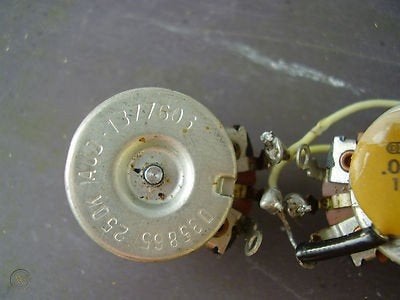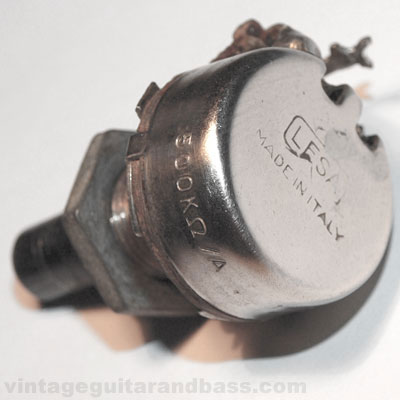dating ampeg amplifiers
Participants receive a piece of bar stock with a six (6) character serial number that has been obliterated as well as a piece of aluminum bar stock intended as a standard for the size, shape, and positioning of the stamped alphanumeric characters used in the serial number. The serial number and certification are stickers on the side of the body. One says “ For manufacturer only 12201067” bar code. The other sticker has model information and UL certificate. If you don’t see serial number I’d contact the selller or amazon customer service.
PLEASE NOTE:This information original was found on The Unofficial Ampeg Page (http://users.aol.com/bluemuse/) which appears to be dead. I pulled this information from Google's cache of the site. It has a note at the top of the page that they were reprinting with permission from the authors of Ampeg: The Story Behind the Sound, ©1999, published by Hal Leonard. If anyone feels this page should be taken down, please feel free to contact me.
Ampegs can be divided into six distinct groups for dating purposes: pre-1953, 1953 to mid-1965, early 1965 to 1969, 1969 to 1979, 1981 to 1984, and post-1984. Each group uses a unique serialization scheme that can be used to assist in dating the amps, but in many cases, it is the features and characteristics of the amps that determine the year of manufacture.
Electronic Industries Association (EIA) codes can also be very useful for giving clues as to an amp's age. These codes can be found on speakers, transformers, pots, capacitors, and multi-section electrolytic 'can' caps. Of course, these codes are only applicable to original components, not replacement parts.
| WARNING: Ampeg amplifiers, especially the high-powered amps such as the SVT and V-series, contain lethal voltages even when unplugged and turned off. Therefore, do not poke around in your old Ampeg if you are unfamiliar with amplifier electronics or their operation. |
A brief summary of the EIA system follows.
Shortly after World War II, American electronic component manufacturers began to stamp a semi-standardized code into the parts they produced. The code contained information regarding the manufacture and date of production. These codes have been used on components including potentiometers (pots), transformers, capacitors, tubes, and speakers.
The code usually consists of 6 or 7 digits such as 137634 where the first two or three digits is the EIA code for the manufacturer (137 denotes CTS), the fourth digit and sometimes fifth digit denotes the year (in this case it could be 1956, 66, or 76), and the last two digits denote the week of the year. It is important to note that parts do not always contain EIA codes, especially those parts from the late 1940s and early 1950s.
Some common manufacturer codes for parts used in Ampegs include:
- Speakers: Jensen (220), CTS (137), Eminence (67), Quam (270), Rola (285), Altec (391), Electro Voice (649)
- Capacitors: Pyramid (472), Cornell-Dubilier (34)
- Transformers: Acrosound (878), Stancor (138), Electrical Windings (682), Todd Electric Co. (926), Standard Electric Products (668)
- Pots: CTS (137), Stackpole (304)
Pre-1953
The Michael-Hull amplifiers can be narrowed down to a date of manufacture between 1946 and 1948. These amps used a serial number system that was not used by any Ampegs. Unfortunately, the serial numbers are of little help for dating one of these pre-Ampeg models and EIA date codes on components were used sporadically during the early post WW-II years. The only date codes that seems to be readily available is found on the speaker magnet located under the bell cover.The Ampegs made between 1949 and 1953 did not have serial numbers and must be dated in the same way as the Michael-Hull models, specifically, by finding the EIA date codes on pots, transformers, multi-section 'can' capacitors, and speakers.
1953 through mid-1965
It appears that the serialization system used during this time period is date encoded which makes dating the amplifier rather easy. The serial numbers are 6 digits in length with the following pattern: YMMNNN, where Y denotes the year, MM the month, and NNN the Nth unit produced that month. The Nth unit, however, may not have started with 001. Ampeg may very well have used 100 or 101 as the starting point during slow production periods. Nevertheless, for dating purposes, the serial number provides adequate information during this period.For example, a Duette with serial number 710201 was made in 1957 (7), during October (10), and was possibly the 201st amp made that month. A Super Echo Twin with serial number 404553 was made in 1964 (4), during April (04) and may have been the 553th amp made that month (553).
Caution is needed for dating amps from 1953, 1954, 1955, and 1960. The serial numbers from these years were duplicated in 1963, 1964, 1965, and 1965, respectively. Taking the example Super Echo Twin above, its serial number alone could denote April 1954 or April 1964. A Mercury with serial number 009054 could be from September 1960 or it could be from the second serial number system implemented in 1965. Luckily, it is very easy to determine which year the first digit denotes.
The key is the model and the cosmetics. For instance, the Super Echo Twin was made in 1964, but not in 1954. The M-12 Mercury circuit of 1960 used 6V6 power tubes, but the Mercury circuit of 1965 used 7591As. Likewise, an Ampeg from 1954 would not be covered in blue check vinyl whereas an amp from 1964 would have this covering. An Ampeg from 1960 would be covered in navy random flair vinyl whereas an amp from 1965 would be covered in blue check vinyl. Another check for a 1960 versus a 1965 or later serial number (i.e. numbers beginning with 0) is that the second and third digits of the number denote the month in the first serial number system. Therefore, a serial number where these two digits are greater than 12 must be from the second serial number system (1965 - 69). A final cross check with EIA dated components should remove any doubt about an made during the 1953 - 65 period.
Early 1965 through 1969
The second serial number system was implemented in January 1965 and used until the end of 1969. This system overlapped with the previous serialization scheme for a period of about 6 months. These are also 6-digit numbers, which appear to have been applied sequentially, but they are not date encoded. Enough information (serial numbers, model, date codes) has been gathered to prepare the following guide for dating by serial number. Note that the year associated with a range of serial numbers is very rough and will likely change as more information is gathered for refining the estimates. The EIA date codes of original components should be used to confirm an approximate date of manufacture.

| Serial Number Range | Year |
| 000001 to 020000 | 1965 |
| 020000 to 049000 | 1966 |
| 049000 to 075000 | 1967 |
| 075000 to 080000 | 1968 |
| 080000 to 092000 | 1969 |
1970 through 1979
The third serial number system was implemented in 1970. Not enough information was available to the authors to determine year of manufacture by serial number. An added variable is that during the Magnavox years, Ampeg may have used separate serial number systems for each model or for models that shared the same chassis like the VT-22 and V-4. Until such time that enough information is available to date 1970s Ampegs by serial number, the features of the amps from this period can be used and compared to the following table.
| Feature | Years Used |
| Blue control panel graphics | 1968 - 1972 |
| Black control panel graphics with square corners | 1972 - 1975 |
| Black control panel graphics, horizontally split with rounded corners (solid state amps) | 1973 - 1979 |
| Black control panel graphics, horizontally split with rounded corners (tube amps) | 1976 - 1979 |
| Distortion control knob | 1976 - 1979 |
| White rocker switches (solid state amps) | 1973 - 1979 |
| White rocker switches (tube amps) | 1976 - 1979 |
| Black rocker switches | 1968 - 1975 |
| Metal 'a' logo | 1968 - 1972 |
| Plastic 'a' logo | 1973 - 1979 |
1981 - 1984
The MTI-era amplifiers cannot be dated by serial number. Dating by EIA date codes is impossible since the Japanese components do not carry EIA codes. However, all MTI-era Ampegs were made in the relatively short time period between late 1981 and 1984.Post-1984
The modern Ampegs of the St. Louis Music era were all made after 1985. The amps made since 1988 have a 10-digit serial number which is encoded for model, country, date, and year. The serial number can be broken down as follows:- Digits 1, 2, 3 = Model

 Digit 4 = Country Code where:
Digit 4 = Country Code where: - U = U.K.
- D = domestic U.S.
- W = worldwide
- Y = Europe
- A = 1988
- B = 1989
- C = 1990, etc.
- 1 through 9 = January through September
- 0 = October
- A = November
- B = December
Digits 7, 8, 9, 10 = serial number
How To Identify Cts Pots
Around 1966 Fender started using CTS pots.
Look for this number: 035865
It’s a code for Stratocaster pots. Any vintage 66-76 strat pot must have 035865 stamped in the back. Simple. Some people on ebay are selling NOS pots claiming they are original Fender Strat pots but if they have a different (whatever) number then THEY ARE NOT STRATOCASTER POTS and they are not to be considered original parts. These NOS CTS pots are indeed as old as they claim to be and totally identical to the ones used by Fender, but have a different code, meaning they were destined to other (non Fender) instruments or electronic devices. BEWARE! I don’t normally indulge with capital letters but this time I did. Remember, 035865 is the deal.
There is a rumor that some 1968 strats were fitted with pots showing 032367, a code seen on Telecasters and P.Basses. I tend to believe this, I’ve seen some of these strats and the story seems legit to me in the end.
Cts Pot Serial Number Lookup
It also seems that pots were produced/ordered in mass during certain weeks only.
As istance, in 1971 I’ve only come across pots made in the 12th week. In 1970, I’ve only seen pots made in the 2th, 14th, 21th and 52th weeks.
250k= pot value
AUD=audio
137=CTS code
YY-WW (66=year, 18=week)
A strat pot with the Telecaster code (032367). I’ve seen this in a 68 strat for sale on ebay and took this pic.

Another 1968 strat I have seen for sale on ebay, showing the same code (please enlarge the pic, you should then see 032367 stamped in the tone pot)
Very late 1970 strat pot (52th week, the last one!). Notice also the anomaly with the straight plastic/fibre part, normally rounded. This happens only in the 52th week of 1970. Crazy stuff!

How To Date Cts Pots
Late 1973 strat pot (035865 is the strat code). 137=CTS code 73=Year 50=Week